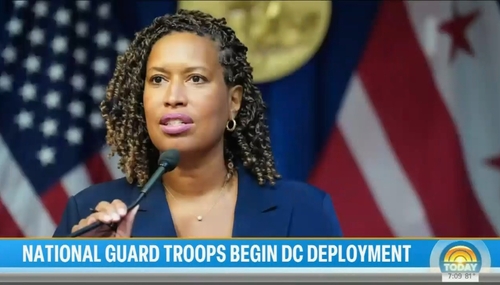“American Morning” featured all manner of climate calamity.
The May 23 edition of CNN’s morning show included a segment about the U.S. National Oceanic and Atmospheric Administration (NOAA) Climate Prediction Center’s assessment of the upcoming hurricane season. NOAA is predicting the Atlantic hurricane season will be “above normal.”
It’s not unusual for the media to intermingle the global warming debate with tropical activity. On the year anniversary of Hurricane Katrina’s landfall last August, Hannah Storm on CBS's “The Early Show” interviewed “The Ravaging Tide” author Mike Tidwell. Tidwell warned we’ll see more catastrophic hurricanes due to global warming.
But CNN Severe Weather Expert Chad Myers said natural cycles were to blame for the latest above-normal hurricane forecast.
“The numbers are still high still,” said Myers, referring to the NOAA prediction. “The numbers are not high because of global warming, they don’t think. The numbers are still high because of this multi-decadal cycle.”
The NOAA report states “warmer-than-normal sea surface temperatures in the Atlantic Ocean, and the El Niño/La Niña cycle” are responsible for the increased forecast. On May 22, NOAA issued a forecast of 13 to 17 named storms, 7 to 10 hurricanes and 3 to 5 major hurricanes (category 3, 4 and 5).
Ironically, the “American Morning” segment on hurricane predictions was immediately followed up with the speculation of an Al Gore run at the presidency. Gore, who is not a scientist but insists that man-made global warming is a cause of increased tropical weather activity, appeared on CNN’s “Larry King Live” the previous night. Gore admitted he had not closed the door completely on a presidential bid, but he was focused on another effort.
“I have been focused on a different kind of campaign – to persuade the people in this country and around the world we have to respond to the climate crisis,” said Gore. “It’s by far the most dangerous crisis our civilization has faced.”
Later in the morning show, Chetry appeared to invite climatic destruction. CNN Miami correspondent John Zarrella reported on the drought situation facing the Florida Everglades and the potentially hazardous repercussions facing the Florida ecosystem and economy. At the end of the segment, Chetry had devised her own solution to the pending crisis:
Zarrella (from Plantation, Fla.): “Now, South Florida Water Management scientists are telling is it is going to take an abnormally high rainy season. We’re going to need about three feet of water to break out of this drought. Kiran.”
Chetry: “All right, maybe a couple of Category 1 hurricanes could do it.”
Of course, Category 1 hurricanes do more than drop a little rain. According to NOAA, Category 1 hurricanes on the Saffir-Simpson scale have winds of 74 to 95 mph and include storm surges generally four to five feet above normal. Damage is “primarily to unanchored mobile homes, shrubbery, and trees” and may also cause some coastal road flooding.
One such example of a Category 1 hurricane was Hurricane Gaston, which struck the South Carolina coast in 2004. According to the National Hurricane Center, the American Insurance Services Group reported $65 million in insured losses associated with Gaston, with total damages around $130 million.





